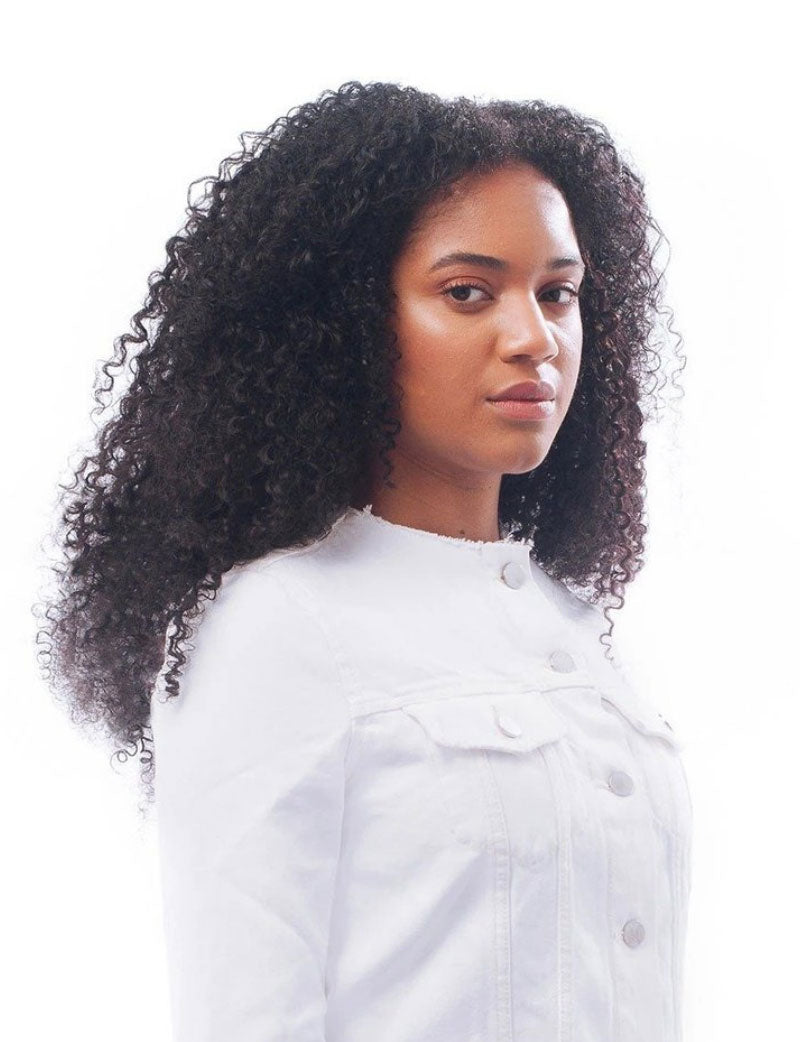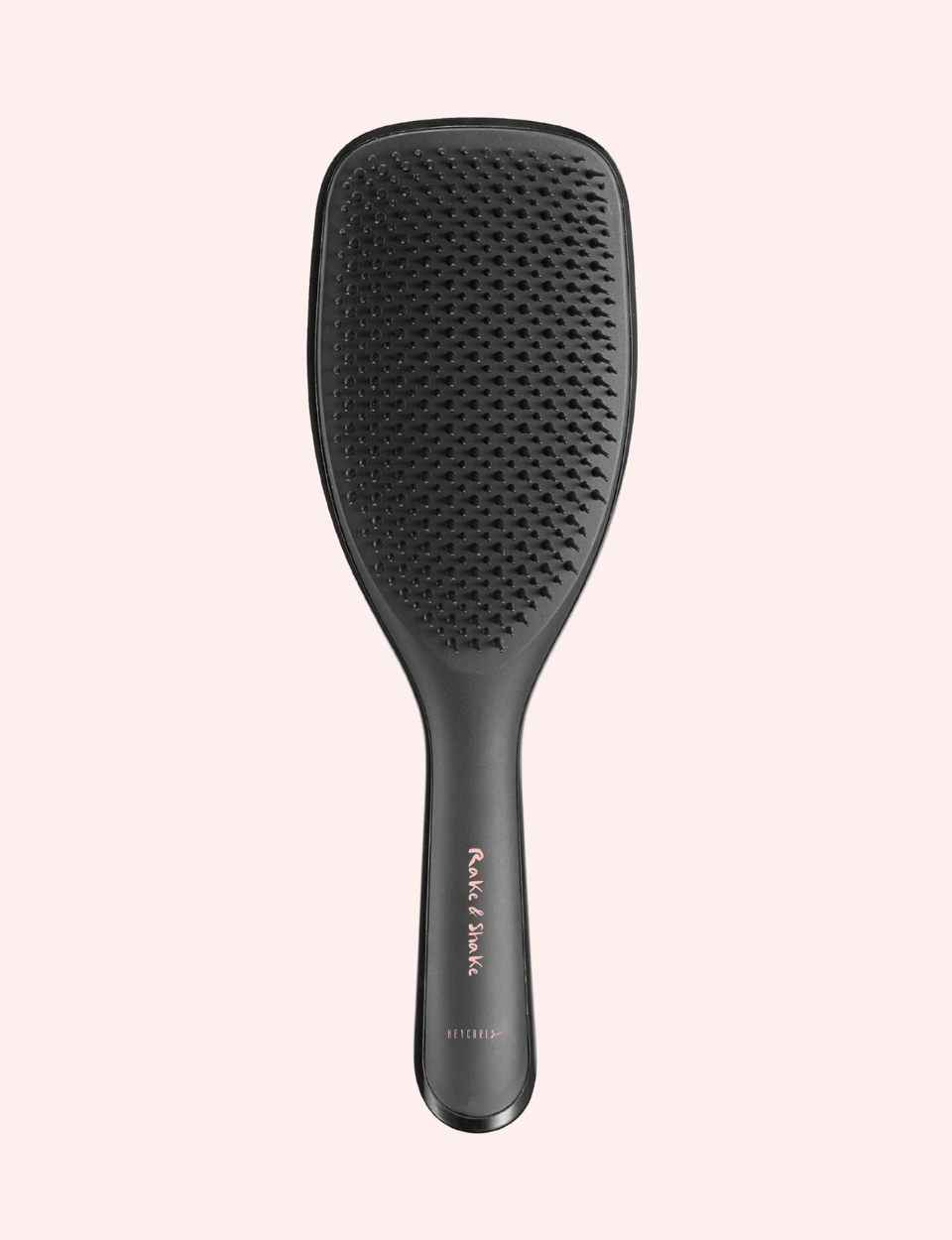You want healthy natural hair and you would love for it to be a certain length. Most of us know, this is not an easy task. Because 4c hair strands are fine and have tight coils, there are more points of weakness. Coupled with the fact that natural hair is already the driest hair type, it will be more prone to breakage and shedding than other hair types. So, how can you reduce this as much as possible and ensure that your natural hair grows long and healthy?
We're going to break it down for you. This article will talk about why natural hair breakage happens, and offer our five best methods to prevent hair breakage so you can have the healthy hair you've always dreamed of.
Why does natural hair breakage happen?
An average person is likely to lose 50 to 100 strands of hair every single day; however, when excessive hair shedding enters the mix, this number can get significantly bigger. In most cases, the breakage of hair strands is due to an inefficient hair care routine, or other causes like your diet and hydration levels. So why does hair breakage and shedding happen?
- Weak hair strands. 4c hair is naturally fragile due to its tight, coily shape, which causes it to easily break and shed.
- Too much tension. If you love combing, physically manipulating, and twisting your hair, you may be contributing to the breakage.
- Heat exposure. Heat styling dries out hair strands and weakens them. And if you curl or straighten your hair often, this may be a cause of your hair breaking.
- Chemical treatments. Hair relaxers, keratin treatments, and bleach can also be the culprit for breakage. Although keratin treatments have come a long way with a higher focus on keeping hair healthy, hair damage and breakage can still occur if the hair is not cared for properly after the treatment.
13 ways to stop natural hair breakage and encourage hair growth
1. Stop drying your natural hair with towels
Yes, you heard us correctly. We know it’s tempting, but stop*doing*it! When natural hair is wet, it’s at its most vulnerable state. Rubbing your hair with a dry cotton towel can be catastrophic, as the harsh fibres snag and pull on your hair. This leaves you with dry and brittle strands, highly prone to breakage. Use a microfibre towel or a soft t-shirt to dry your hair and avoid rubbing. Instead, use the towel to gently squeeze and pat out excess water. It’s really that simple.
2. Stop using heat on your natural hair
You knew we were going to say this as well, right? Well, for the people in the back, stop using heat on your natural hair! Heat is the root cause of natural hair breakage. Direct heat like using blow dryers, curling irons or flat irons strips your natural hair of moisture from its deepest layers, causes split ends and cuticle damage, which ultimately leads to breakage of your natural hair. If you must blow dry your hair, use a low heat setting, use a heat protectant before heat styling, and opt for ceramic hot tools, as they distribute heat more evenly.
3. Use your fingers to detangle your natural hair
At this point in your natural hair journey, you undoubtedly know that finger detangling can be a pretty tedious task. It is the way to go though, if you want to treat your natural hair as gently as possible. Using your fingers to take knots out, means less stress on your hair shaft and thus less breakage. It takes some time to get used to in the beginning, but it is a nice Sunday afternoon task after a hair wash day, while you watch your favorite shows on Netflix.
4. Use the right detangling tools
If you truly don't have the time to finger detangle, take a good look at the detangling tools you're using. Using a wide-tooth detangling comb is best—and be sure that you don't detangle your natural hair while it's wet! But be sure that your hair isn't completely dry either, as hair strands could be weaker at this point as well. You want your hair to be damp for easiest detangling with minimal damage.
5. Wear protective styles more often
Less manipulation equals less breakage. As most naturalistas know, protective hairstyles are key to keeping 4c hair healthy and hydrated. By wearing your hair in a protective style, you give your natural hair its much needed beauty nap and a safe space to grow, without much interruption. These days, there are ample protective styles to choose from. Go for finger coils, bohemian marley twists, edgy cornrows or the ever flexible curly clip-in hair extensions if you want to keep a similar look to your own natural hair.
6. Wrap your hair in a silk bonnet at night
Speaking of protective hairstyles, did you know that just sleeping can wreak havoc on 4c hair? That's right...while your skin is getting its beauty rest, your hair may not be getting the same if not cared for properly at night. If you sleep with your hair loose on a cotton pillow (like most of us do), your hair strands pull and snag at the harsh cotton fibres, causing breakage and tangling while you sleep! Cotton also causes curly and natural hair to lose moisture by sucking every last drop of it out of (already dry) natural hair. And if you're the type to toss and turn all night, this makes the problem worse.
Instead, be sure to carefully wrap your hair before sleeping, and secure it with a silk or satin bonnet. Because these fabrics have tightly woven fibres and have more "slip", your hair strands will glide easily under them without friction. Satin also helps the hair retain moisture overnight, so over time, you'll be the proud owner of healthier hair.
7. Do not wash your hair with shampoo regularly.
Shampoo is kind of the archenemy of natural hair. Yes, shampoo cleans your hair, but it also has the superpower to strip your hair from its vital nutrients, leaving it dry and brittle. Why? Because most shampoos contain surfactants like sulfates. For those with oily hair, sulfates can be a blessing as they lather well, giving the hair that squeaky clean feel. For those with wavy, curly, or coily hair, though, sulfates just dry the hair out further. When choosing a shampoo, it's important to choose one with hydrating, moisturizing ingredients like glycerin, natural oils and butters like jojoba oil or shea butter, seed oils like grapeseed oil and blackseed oil.
Another option is to co wash your natural hair (conditioner only), which adds hydration and gently cleanses at the same time.
8. Trim dead ends
Look, we know no one loves getting their hair trimmed—especially when you're trying to grow it out! But sometimes, a little sacrifice in the short term results in bigger gains in the long term. In this case, if you have dry, dead, or split ends, they're doing nothing to help your hair loss or breakage. Split ends end up traveling up the hair shaft, tangling in with healthier hair strands, and cause more tangling and breakage than you would have if you simply cut them off. And unfortunately, there is no way to fix split ends once they happen. To avoid this, be sure to get a trim two to three times a year, cutting off 1/4 of an inch each time. You can also opt for a dusting, which would only remove the dead bits and retain length.
9. Use deep conditioner regularly
Along with a mild, hydrating shampoo, 4c hair should be conditioned as well as deep conditioned to achieve maximum moisture retention. A conditioner is great to use when washing, as it softens the hair and helps with detangling. Most conditioners, though, only work on the outside of the hair. When you deep condition natural hair, the ingredients penetrate the hair shaft more deeply, conditioning from the inside out. Try regularly deep conditioning your hair and watch your hair grow faster and healthier!
10. Watch your protein and moisture balance
Although we talk about moisturizing 4c natural hair, it's important to also do a protein treatment if needed. If you find that your coils are limp, frizzy, aren't holding well, or feel strangely soft, you may be in need of a protein boost. A quick way to tell is to take a single strand of hair between your thumb and forefinger and stretch it. Healthy hair should stretch about a third more than its natural length, then spring back into shape. If the hair snaps quickly, it's likely too dry. If it stretches too much, you may need more protein.
Look for ingredients like silk protein, oat flour, hydrolyzed protein, and keratin, and look for buzzwords like "strengthening" or "repairing" when shopping for protein treatments. Beware, though...too much protein could result in more breakage, and dry, dull, frizzy hair. That's why it's important to keep an eye on your hair's moisture levels as well as protein levels, to keep that perfect balance for healthy, frizz-free, breakage-free coils.
11. Take care of your scalp
Our hair grows from our scalp, not the ends. While some may give their ends extra TLC, they may neglect the most important part of the hair...the scalp! Oil buildup, bacteria and unseen fungus can be major culprits for unhealthy hair that results in excessive shedding. Be sure to use a scalp scrub or clarifying shampoo every now and again, to balance your scalp's pH levels and keep hair follicles happy.
You can easily clarify your hair at home with an apple cider vinegar rinse, by mixing a couple tablespoons of apple cider vinegar with water, and working it into your scalp before rinsing.
12. Learn the right moisturizing techniques for your hair type
Everyone's hair is different. And although 4c hair shares the same base properties across the board, what works for one person may not work for you. The most popular moisturizing method, however, is the LOC method (liquid, oil, cream), in which you would apply these products to your hair in that specific order, to maximize moisture retention. Some prefer the LCO method (liquid, cream, oil), hydrating wraps, or hair steaming as other techniques to boost hydration. Give a variety a try to learn what works best for your hair.
13. Get your diet in check
You are what you eat! Have you ever noticed your skin glowing when you cut out processed foods and increase your water intake? That's your body literally projecting its goodness from the inside out. The same goes with your hair. A diet rich in folic acid, biotin, niacin, iron, and calcium strengthens natural hair, reducing shedding and breakage. It goes without saying that drinking more water throughout the day (especially if you live in a dry or cold climate), will also help your hair's hydration levels. If you are struggling to eat a balanced diet that includes these nutrients, consider biotin or iron supplements for healthier hair, skin, and nails.
The bottom line
Natural 4c hair breakage is common and inevitable, but there are some steps you can take to reduce it. Get a good check on your diet, moisture and protein levels, and eliminate any bad hair habits you may have, to prevent breakage and promote healthy hair growth. We're sure you'll see a difference in your hair once implementing these tips! And if your hair just won't grow, you can always give curly hair extensions a try to get longer, thicker hair instantly.
If you have any more tips to share, drop them in the comments below.







